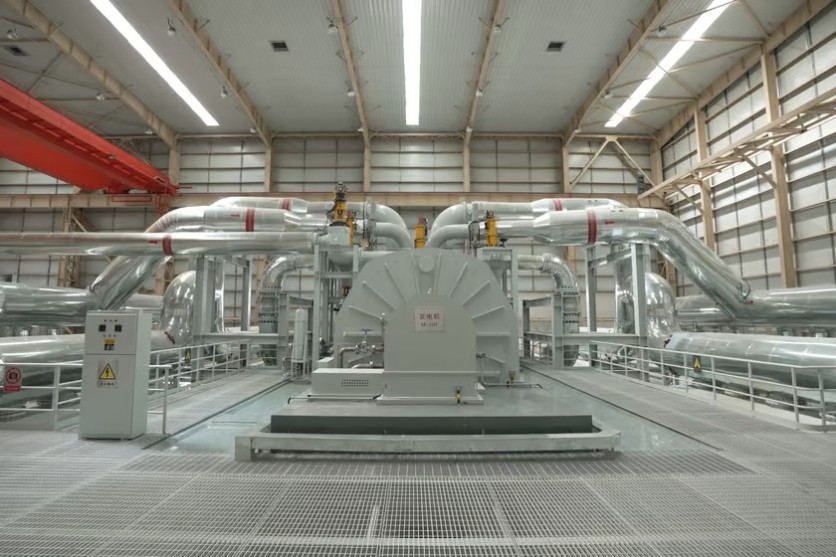The largest compressed air energy storage system in the world is finally up and running in Northern China, according to a report by New Atlas.
China has broadened its green energy initiatives by turning on the largest flow battery in the world, a 100 MW, 400 MWh vanadium flow battery erected in Dailan that provides affordable energy storage without utilizing lithium.

Read also: 'Wave Energy Generator': CalWave's Clean Power Tech Finishes A Successful 10-Month Open Ocean Test
World's First CAES System
According to Asia Times, China intends to rely extensively on compressed air energy storage (CAES), handling over a quarter of the nation's energy storage by 2030.
But now, the world's first 100-MW advanced CAES system has been connected to the grid following years of development by the Chinese Academy of Sciences and is prepared to start providing commercial service in the northern Chinese city of Zhangjiakou.
The Academy sets the system apart from the 110-MW CAES plant in Alabama's McIntosh Plant, which has been operating since 1991 and is not a green energy storage option because it recovers energy by burning its stored air with natural gas, according to New Atlas.
The new Zhangjiakou plant eliminates the need for fossil fuels by utilizing advancements in supercritical thermal storage, supercritical heat exchange, high-load compression, and expansion technologies.
The new facility has a system design efficiency of 70.4% and can store and release up to 400 MWh, according to China Energy Storage Alliance.
This is significantly higher compared to available compressed air systems that are about 40-52% effective. Even the two larger Hydrostor CAES plants expected to open in California in 2026 are only estimated to be about 60% efficient, as per New Atlas.
The Zhangjiakou plant, according to the Chinese Academy of Sciences, has the capacity to supply the local grid with more than 132 GWh of power each year, meeting the peak demand of 40-60,000 houses.
The Institute of Engineering Thermophysics (IET) of the academy claims that this will prevent the burning of around 42,000 tons of coal in power plants and cut annual carbon dioxide emissions by roughly 109,000 tons.
"CAES has the advantages of large storage capacity, low capital cost, long lifetime, safety, and environmental friendliness. It is recognized as one of the most promising technologies for large-scale energy storage," the academy wrote in a news release.
Related Article : 'Solar Rooftops:' Farmers Are Using Distributed Solar Panels On Walls and Roofs To Promote Green Farming
This article is owned by Tech Times
Written by Joaquin Victor Tacla
ⓒ 2025 TECHTIMES.com All rights reserved. Do not reproduce without permission.




